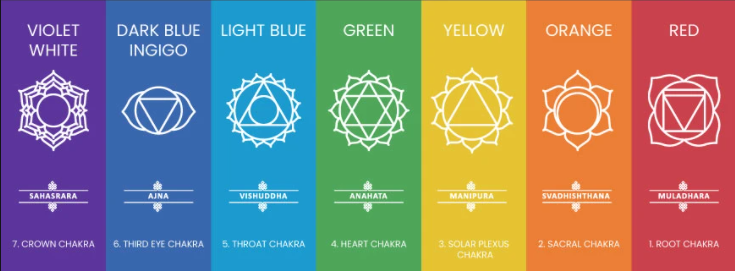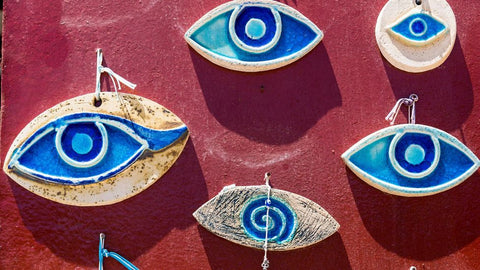What is the 7 Chakra Elements?
Spiritually speaking the human body has more to it than physical and mental barriers. This energetic system is called Chakra which is a Sanskrit word for wheel - synonymous with continuity. There are seven main chakras, extending from the base of your spine to the crown of your head. This age-old concept of chakras is now integrated with New Age learnings and thoughts.
Chakras are thought to provide energy to your physical organs and intellect so they work at an optimal level. They help you think of your mind and body like any religious belief.
The Seven Chakras
1. Muladhara - the root chakra

The Muladhara or root chakra is located at the base of your spine and is linked with the red color and element earth.
The root chakra affects your connection with the world, your feelings of ambition, survival, stability, and dependence. Since the root chakra is the primary source of energy, an unbalance can lead to emotions of fear and insecurity that may hurt the drive to succeed resulting in frustration and motivation to move ahead.
Similarly, a balanced root chakra will cultivate positivity with emotions of security, energy, freedom, and strength.
2. Svadhishthana - the sacral chakra

The Svadhishthana Chakra is located under the navel, represented by the color orange, and has water as its element. This chakra is responsible for sexual wellness, intuitiveness, self-worthiness, compassion, creativity, and adaptability.
An unbalanced sacral chakra causes emotional outbursts and a lack of creativity.
3. Manipura - the solar plexus

Manipura is the Sanskrit name of the solar plexus, which means city of jewels. Its location is between the ribcage and navel. It is represented by the color yellow and has fire as its element.
The solar chakra is tied to your self-esteem and controls feelings of anger, ego, and aggression. On a physical level, a balanced solar chakra impacts your digestive system, liver problems, and diabetes. On an emotional level, an unbalanced solar chakra causes depression and low self-esteem whereas its balance will harbor positivity, energy, productivity, and high self-esteem.
4. Anahata - the heart chakra

Connected to vital organs like the heart and lungs, the heart chakra is believed to be in the center of the CVS. This chakra is a connector between the lower and higher placed chakras. Its element is air, represented by the color green.
The heart chakra controls feelings of compassion, love for self and others, passion, and trust. When this chakra is unbalanced you can expect anger, fear, bitterness, anxiety, jealousy, and mood swings. An overbalanced chakra will affect the CVS with symptoms of high blood pressure, heart palpitations, and lung problems.
5. Vishuddha - the throat chakra

The Vishuddha controls the neck, mouth, tongue, and adjoining parts of the throat. Its color is blue and the element is ether. Chakra experts tie it with self-expression, confidence, and communication. A balanced vishuddha regulates the hormones and helps in better communication.
6. Ajna - the third eye chakra

Ajna is set to lie between the eyebrows. Its color is indigo but has no elemental association. Experts connect the Ajna with intellect, intuition, wisdom, and spirituality. A balanced third eye chakra allows you to notice the connection between this world and beyond.
7. Sahastrara - the crown chakra

Sahastrara lies at the top of the head with violet as its color. This is the highest placed chakra and is also the most spiritual one. Sahastrara connects a person to his higher self with feelings of spirituality, inner wisdom, enlightenment, and energetic thoughts.


























